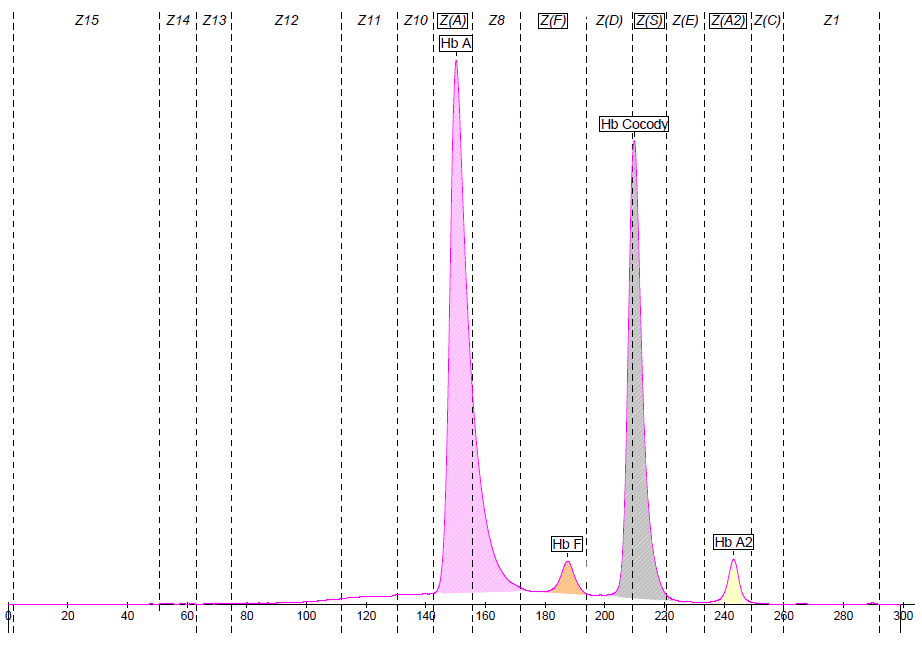General information
Globin chain involved
Status
Heterozygous
Migration zones
Migration positions
210
Sickle Cell Disease: No
Thalassemic variant: No
Capillary Electrophoresis
Fractions
Value %
Hb A
58.4
Hb F
2.6
Hb Cocody
36.1
Hb A2
2.9
Comments
Mutation data
Heterozygous Hb Cocody
Mutation
HGVS Nomenclature
Beta 21(B3) Asp>Asn
HBB:c.64G>A
Hematological parameters
Name
Result
RBC Count
No information
Total Hemoglobin
No information
MCV
No information
MCH
No information
Blood smear
No information
Other analysis
No information
Comments on hematology
Normal
Clinical context
Clinical presentation
Normal
Clinical risk
No data
Variant information
Stability
Normal
Oxygen affinity
No data
Ethnicities in literature
Found in Black, Asian & Caucasian populations: met in a family from the Ivory Coast, in a Japanese family and in a female of Spanish descent
Comments on variant information
Scientific Literature
Scientific references
- https://pubmed.ncbi.nlm.nih.gov/6271242/ Boissel JP. et al., Biochim Biophys Acta. 1981 Sep 29;670(2):203-6.
- https://pubmed.ncbi.nlm.nih.gov/4030382/ Fabritius H. et al., Hemoglobin. 1985;9(2):193-6.
- https://pubmed.ncbi.nlm.nih.gov/2384310/ Ohba Y. et al., Hemoglobin. 1990;14(1):109-14.
- https://pubmed.ncbi.nlm.nih.gov/8507722/ Aguilar-Martinez P. et al., Ann Hematol. 1993 May;66(5):269-72.
- https://pubmed.ncbi.nlm.nih.gov/29365076/ Riou J. et al., Am J Clin Pathol. 2018 Jan 29;149(2):172-180.
Globin Chain involved
Status
The term "Double Heterozygous" refers to cases of heterozygosity on different globin chain types, while the term "Compound Heterozygous" refers to cases of heterozygosity on the same globin chain type.
For example, S/G-Pest is a Double Heterozygous case (beta and alpha-globin chains are mutated) and S/C is a Compound Heterozygous case (only beta-globin chains are mutated).
Migration zones
Migration positions
Sickle Cell Disease
Thalassemic variant
Capillary Electrophoresis
Variant information
Ethnicities are provided for informational purposes only and are based on scientific literature and conference posters.
A hemoglobin variant may therefore be present in populations of ethnic origins or countries not listed here.

